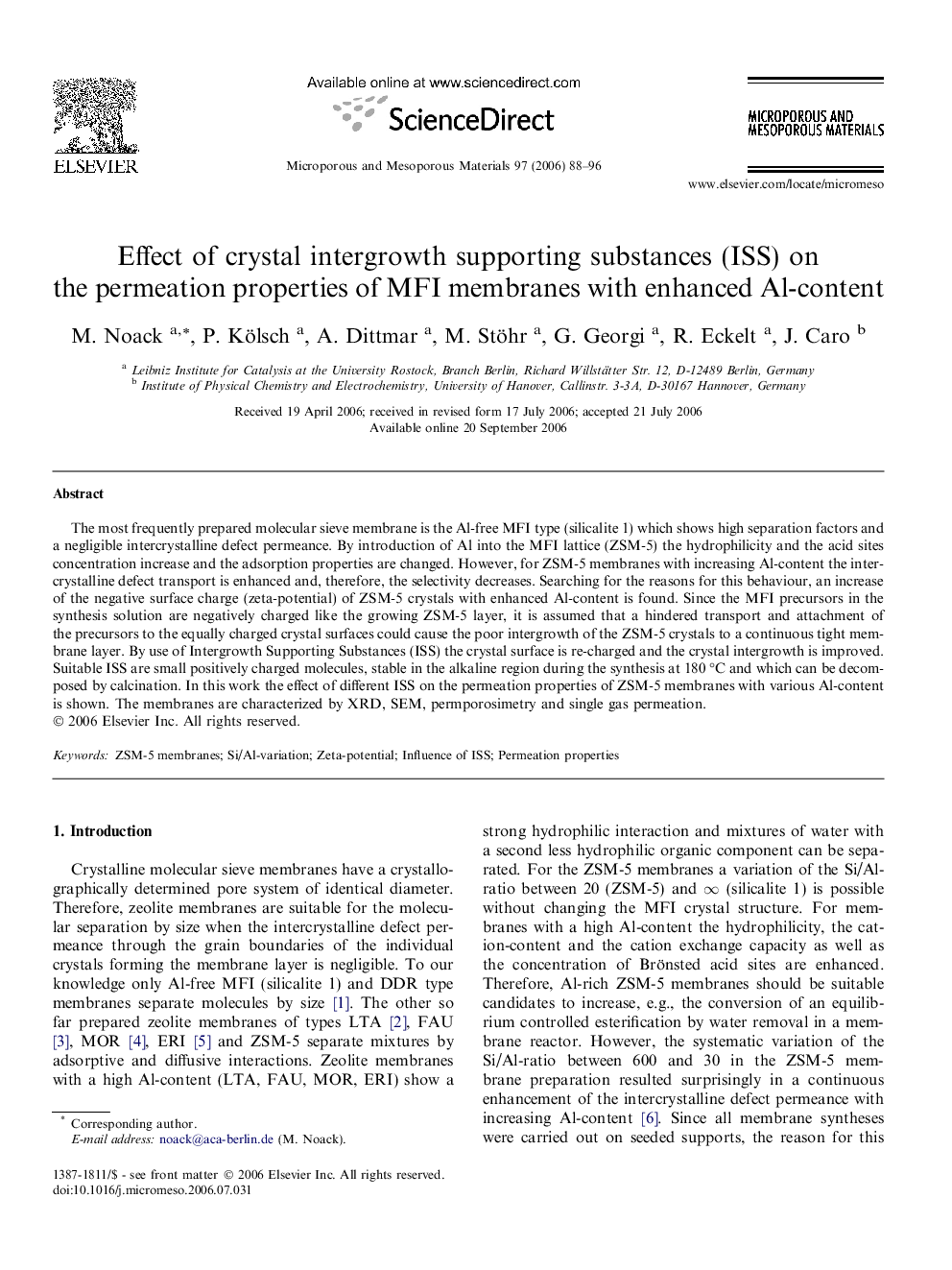| Article ID | Journal | Published Year | Pages | File Type |
|---|---|---|---|---|
| 76746 | Microporous and Mesoporous Materials | 2006 | 9 Pages |
The most frequently prepared molecular sieve membrane is the Al-free MFI type (silicalite 1) which shows high separation factors and a negligible intercrystalline defect permeance. By introduction of Al into the MFI lattice (ZSM-5) the hydrophilicity and the acid sites concentration increase and the adsorption properties are changed. However, for ZSM-5 membranes with increasing Al-content the intercrystalline defect transport is enhanced and, therefore, the selectivity decreases. Searching for the reasons for this behaviour, an increase of the negative surface charge (zeta-potential) of ZSM-5 crystals with enhanced Al-content is found. Since the MFI precursors in the synthesis solution are negatively charged like the growing ZSM-5 layer, it is assumed that a hindered transport and attachment of the precursors to the equally charged crystal surfaces could cause the poor intergrowth of the ZSM-5 crystals to a continuous tight membrane layer. By use of Intergrowth Supporting Substances (ISS) the crystal surface is re-charged and the crystal intergrowth is improved. Suitable ISS are small positively charged molecules, stable in the alkaline region during the synthesis at 180 °C and which can be decomposed by calcination. In this work the effect of different ISS on the permeation properties of ZSM-5 membranes with various Al-content is shown. The membranes are characterized by XRD, SEM, permporosimetry and single gas permeation.
